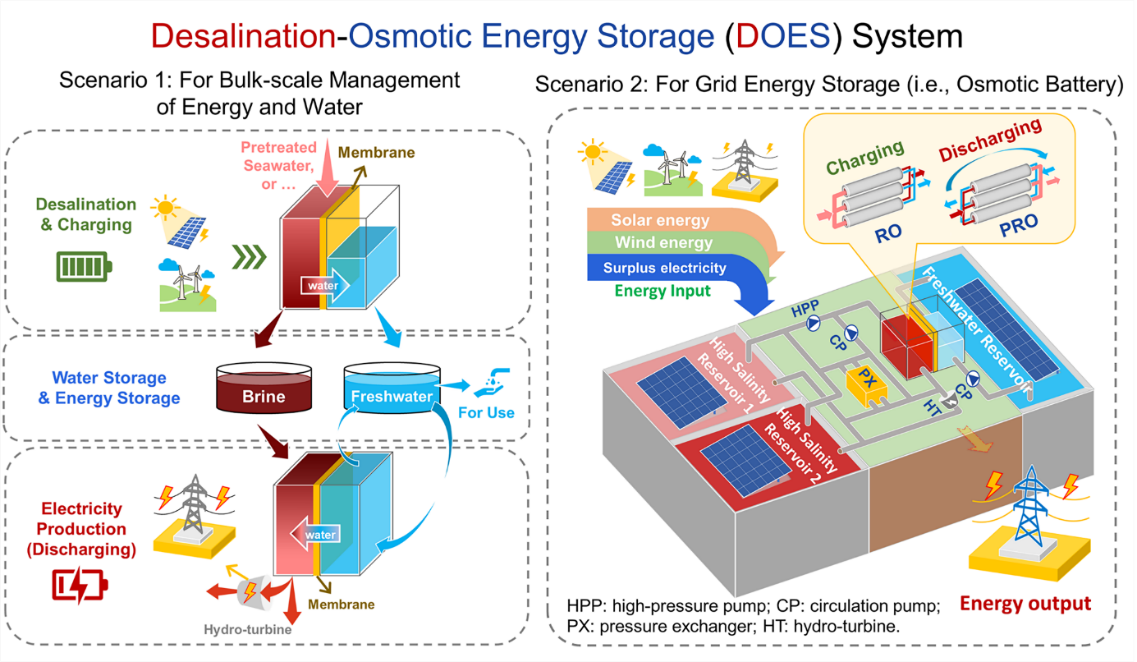Net-zero carbon emission target for mitigating climate change accelerates the exploitation of renewable energy, such as solar and wind, as power origin in utilities sector. However, the intermittency of renewable energy escalates the supply-demand mismatch in not only electricity sector but also water sector, as freshwater supply increasingly relies on unconventional, energy-intensive desalination that is increasingly powered by renewables. To enhance the energy-water resilience, we propose a desalination-osmotic energy storage (DOES) system, which alternates the operation of reverse osmosis (RO) for desalination and pressure retarded osmosis (PRO) for electricity generation, achieving multiple functions including freshwater production and storage, grid energy storage, and eventually bulk-scale management of freshwater and energy supply. Via innovative system design and operation integrating semi-closed (SC) and closed-circuit (CC) configurations in RO and PRO modes in the proposed DOES, energy loss arising from over-pressurization in RO and under-pressurization in PRO could be substantially reduced. As a result, DOES can achieve practical maximum energy efficiencies of >75% for both RO desalination and PRO electricity generation, and a round-trip efficiency of >68% when used as a grid-scale energy storage system (ESS). Apart from the quantitative analysis of energy performance, a qualitative comparison of various other performance metrics between DOES and other grid ESSs was also conducted. Given its various performance advantages as well as multi-functionality, the DOES system could be an important complement to, though not replacement of, existing grid-scale ESSs.
Keywords: Desalination-osmotic energy storage (DOES), osmotic battery (OB), reverse osmosis (RO), pressure-retarded osmosis (PRO), renewable energy, energy efficiency.


